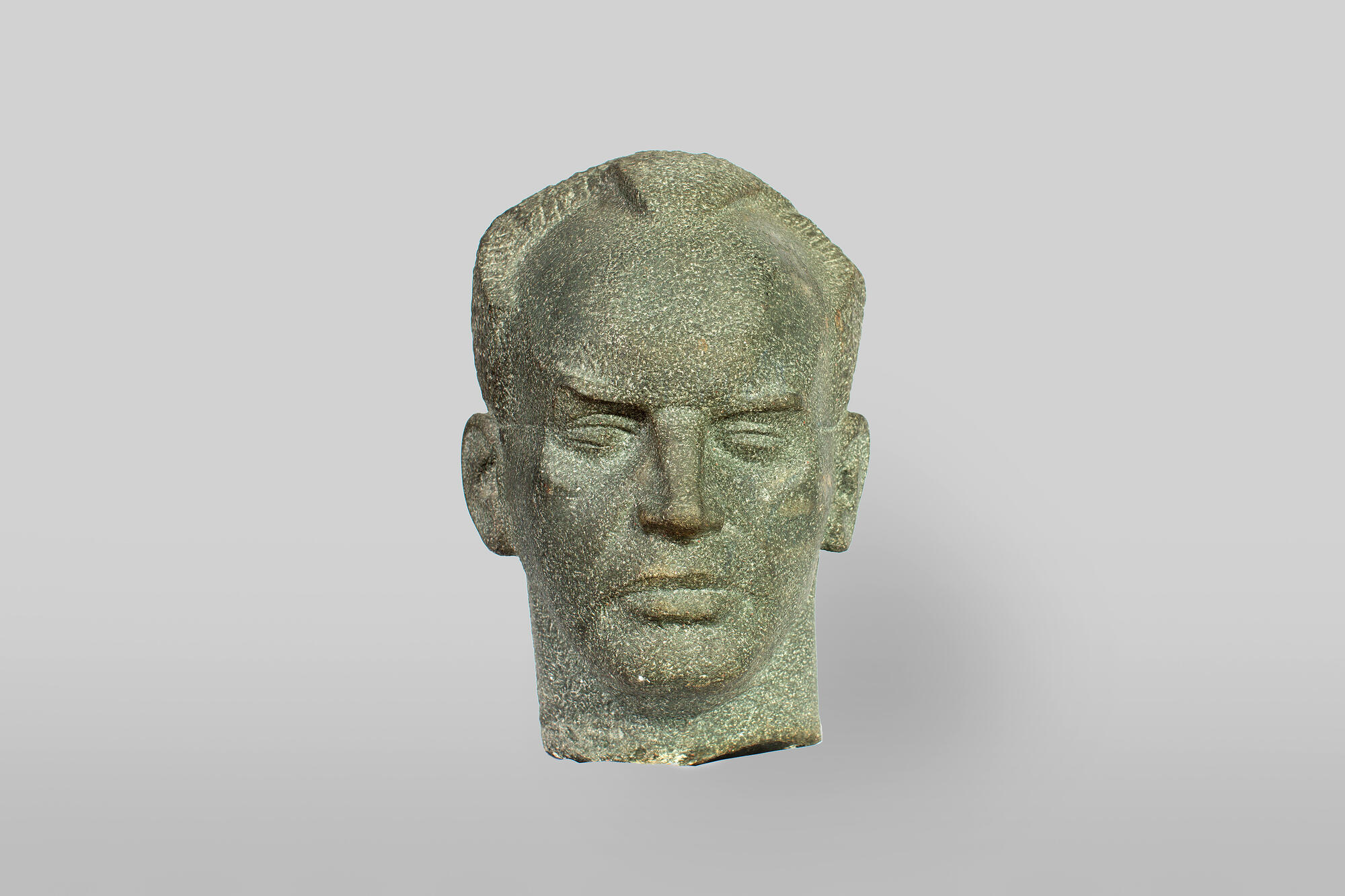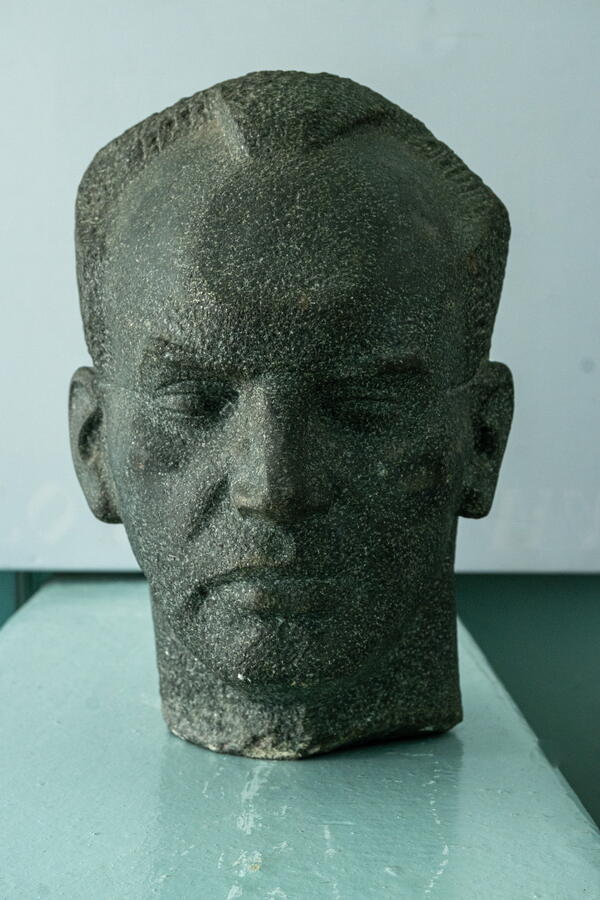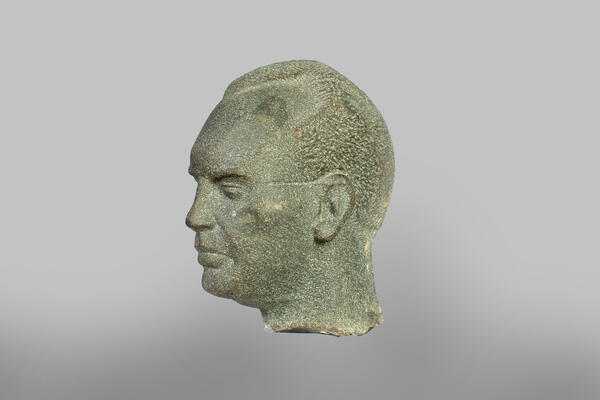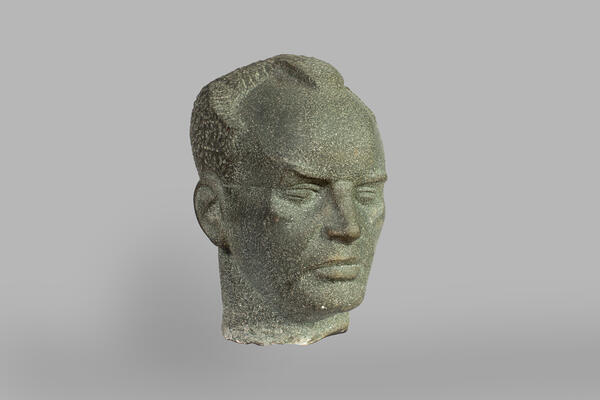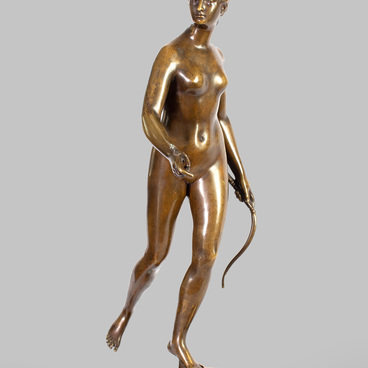The Tambov Regional Art Gallery has a portrait of Herluf Bidstrup (1912–1988), the most popular Danish cartoonist in the USSR, who was no less famous than his fellow countryman — the storyteller Hans Christian Andersen. This sculptural portrait was created by Boris Ivanovich Dyuzhev (1928–1998), an Honored Artist of the RSFSR.
Among Dyuzhev’s other works is a monument to Shakib Zhaber in the city of Aley (Lebanon), a bust of Vladimir Lenin in Moscow, a monument to the defenders of Tula, sculptural portraits of famous political and public figures from Africa — Kenneth Kaunda, Kwame Nkrumah, Nelson Mandela, and others. Boris Dyuzhev’s famous works include the statues of Yuri Gagarin, Romain Rolland, Alexander Pushkin, Fridtjof Nansen, and others. He took part in the reconstruction of the high reliefs of the Cathedral of Christ the Savior.
The portrait of Herluf Bidstrup is made of granite, and the painter’s sharpened regular features echo the traditions of ancient art. The design is simple and concise. Bidstrup was born on September 10, 1912, in the capital of the German Empire. His father, the scene painter Hermond Bidstrup, was an aspiring artist in his youth, however, later, out of the need for money, he started doing any jobs related to painting, including house painting. The First World War broke out two years after Herluf Bidstrup was born. The family was starving. Bidstrup’s father was arrested on suspicion of espionage. When he was released, the family moved to Denmark. Herluf took a penchant for drawing in his early years. When the future cartoonist was five years old, the boy’s uncle burst out laughing while viewing his drawings. At first, Herluf was offended by such a reaction, but, after giving it some thought, the young artist understood what exactly caused the laughter and decided to use humor to his advantage. Herluf received his art education at the Royal Danish Academy of Fine Arts. After getting the diploma, Bidstrup earned his living by doing odd jobs. Meanwhile, National Socialism was gaining momentum in Germany. Adolf Hitler became the target of Herluf’s first political cartoons. The young artist became an employee of the newspaper “Social-Demokraten”.
The artist claimed that a caricature should be even closer to the original that a photograph. That it does not distort reality, but rather hyperbolizes it, showing a person’s true inner essence. Herluf compared the profession of a cartoonist with that of a sniper — in his mind, both have only one attempt to achieve the goal.
Among Dyuzhev’s other works is a monument to Shakib Zhaber in the city of Aley (Lebanon), a bust of Vladimir Lenin in Moscow, a monument to the defenders of Tula, sculptural portraits of famous political and public figures from Africa — Kenneth Kaunda, Kwame Nkrumah, Nelson Mandela, and others. Boris Dyuzhev’s famous works include the statues of Yuri Gagarin, Romain Rolland, Alexander Pushkin, Fridtjof Nansen, and others. He took part in the reconstruction of the high reliefs of the Cathedral of Christ the Savior.
The portrait of Herluf Bidstrup is made of granite, and the painter’s sharpened regular features echo the traditions of ancient art. The design is simple and concise. Bidstrup was born on September 10, 1912, in the capital of the German Empire. His father, the scene painter Hermond Bidstrup, was an aspiring artist in his youth, however, later, out of the need for money, he started doing any jobs related to painting, including house painting. The First World War broke out two years after Herluf Bidstrup was born. The family was starving. Bidstrup’s father was arrested on suspicion of espionage. When he was released, the family moved to Denmark. Herluf took a penchant for drawing in his early years. When the future cartoonist was five years old, the boy’s uncle burst out laughing while viewing his drawings. At first, Herluf was offended by such a reaction, but, after giving it some thought, the young artist understood what exactly caused the laughter and decided to use humor to his advantage. Herluf received his art education at the Royal Danish Academy of Fine Arts. After getting the diploma, Bidstrup earned his living by doing odd jobs. Meanwhile, National Socialism was gaining momentum in Germany. Adolf Hitler became the target of Herluf’s first political cartoons. The young artist became an employee of the newspaper “Social-Demokraten”.
The artist claimed that a caricature should be even closer to the original that a photograph. That it does not distort reality, but rather hyperbolizes it, showing a person’s true inner essence. Herluf compared the profession of a cartoonist with that of a sniper — in his mind, both have only one attempt to achieve the goal.
